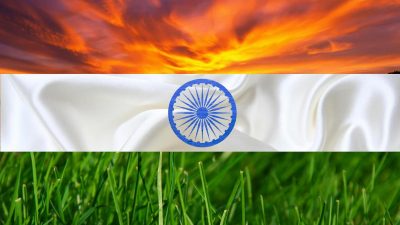By
Ananya S Guha
History, memory and myths are some of the grand narratives in an individual’s life. Just as there is collective history, there is individual history as well. But what are ‘historical events’ is the question.
The archetype of myths, folk legends, stories read as fairy tales are all embedded in an individual’s conscious or sub conscious. So history as an academic discipline, may be difficult to define or interpret. Cultural and literary happenings may or may not be included as reference points for study and academic discourse. Bertrand Russell himself a mathematician, once said that the study of history is very important for causal relationships, to know and understand the present. The past sometimes is hidden in murky facts, to get to its bottom, needs dispassion and actual analysis of facts. History then is racial, individual and community or folk based.
A national history in a country as diverse as India, has to deal with the problematic of time and space. Where do we begin? The much vaunted Indus Valley civilization, that we speak of with pride, has geographically in its promontories, parts of Pakistan! The Asoka pacifism of days before Christ, and Akbar’s eclectic philosophy, all took shape much before the concept of a unified India was real.
If we were to say or expostulate that it was the dreaded British who gave more than a semblance of to the concept of India, we will not only be castigated but may be proscribed with dire consequences, for such acts of perfidy! Yet the obverse side of the coin also says that kings tried to extend their domains to farthermost corners of the country. Which was this country? Was Megasthenes’ revelation of an Indika sufficient to understand that that the country stretched from one corner to another, or does Sankaracharya’s establishment of ‘mats’ reinforce this inner conviction that intuitively there was this grand design called India, in its soul and spirit? ‘Yes’ say people like Amartya Sen, Asoka, and Akbar who all saw this with their prescient eyes.
So this was the grand narrative of India, a story told in myths and epics, a story told in Vedas, a story in the privation of the independence movement. The creation of grand myths illustrated in myths, vedic chants, Upanishadic philosophy, epics such as the Ramayana and the Mahabharata, had already foreshadowed the meaning and destiny of an India which later on were eyed by invaders for its wealth and even salubrious climates.
That at least two religions were founded from within a system which became more and more inflexible, rigid and caste ridden, paved the way for a cultural and religious insurrection. That one of those religions spread across the world and gave a solid tangibility to the Indian awakening and cause, centuries before the birth of Christ. So India, its ethos, its concept was largely predestined, and the British gave political touches, and an education which continues even to today. That again there was an Indian Renaissance in the 19th century also added to a cultural unification, and the seeds of a nationalistic fervour were sown. Professor Sen is correct, the argument for an India was sown, much, much earlier on even before its conception – paradoxical as that might sound.
The problem of history repeating itself came only after independence – it was in the backwaters of fractious groups that things started happening, and telling, that all was not hunky dory, that within a nation there were sub nations all clamouring for its own individuated passion for culture, and ethnicity, or for that matter ethnocentric issues. This faction ridden state of affairs actually began in the south and the North East in the sixties, and continues even to today.
This was an articulation of memory, social insecurity, ethnic and racial differences, in an exclusive fashion. These continue to today, and outward manifestations are issues such as xenophobia. Hence the divisiveness varied from outright secession to separatism. The myth to be questioned is whether the Indian experiment is still on, or whether the tangibility of a nation is assured? The very fact that the country is professedly secular makes it unique, but also the fact that religious groups have been antagonistic to one another, as well as ethnic groups, makes the problem at once complex and intensely paradoxical.
Ramchandra Guha the noted popular historian, once writing in The Telegraph, Kolkata said that in India the dichotomous reality of parochialism are two – passive and radical. in other words insinuating that every community has its own ethnocentric upbringing.
It is against this backdrop that all movements towards separatism and insurgency should be understood, as well as the factor of ‘neglect’. What is it, how and why do such insecurities take place? It is memory, myth and the narrative of internal signs and symbols. Coupled with this is the geo political situation, economic backwardness, casteism and socio political situations which characterise a region.



No Comments Yet!
You can be first to comment this post!